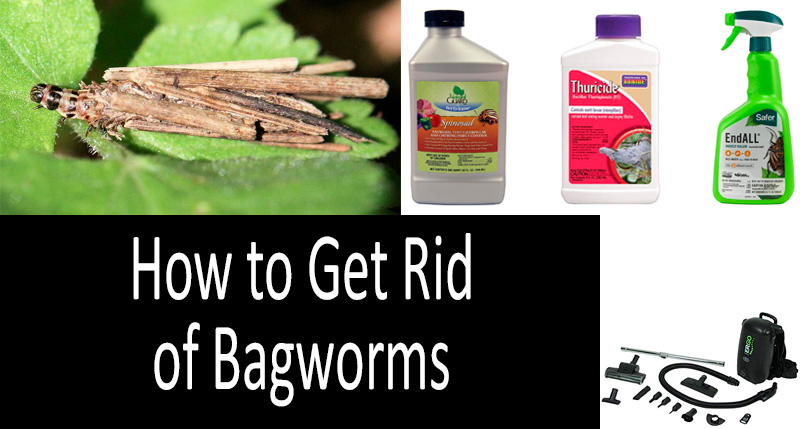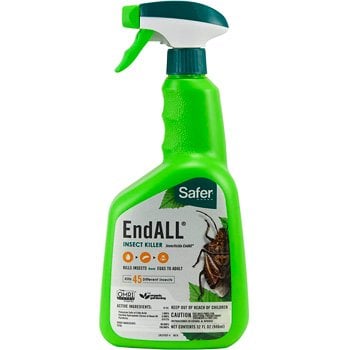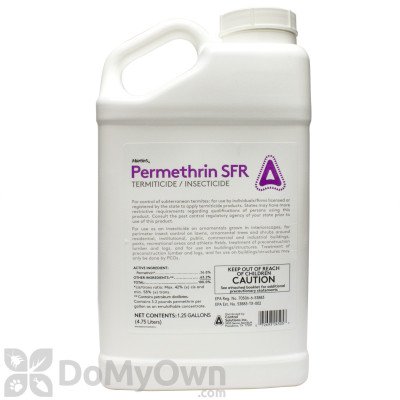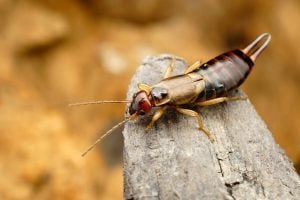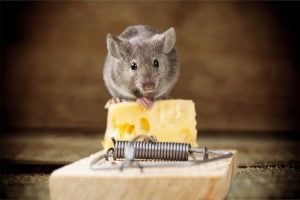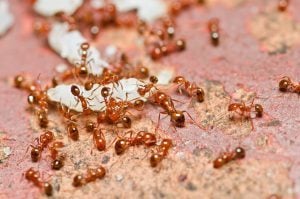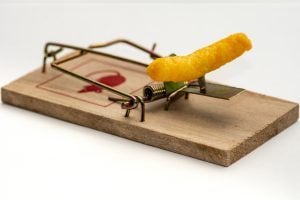These insects are actually caterpillars that eventually molt into moths. They are known for the bags they make and carry, and to which pieces of plant leaves are attached. After mating, females lay eggs in their bags (up to 1,000 eggs at a time) and die, while eggs remain in the bags until they hatch the next spring.
Bagworms feed on more than 50 families of trees and shrubs, primarily arborvitae, cedar, pecan, and pine trees. When the infestation is severe, these insects can defoliate and even kill evergreens like spruce. It is important to understand that bagworm infestation is highly localized because larvae can move only 10 feet from where they hatched. As a result, the host tree can be severely infested while another one nearby may have only a handful of bagworms.
What is the best way to get rid of bagworms? There are two science-based approaches: biological control and insecticidal treatment. It is worth noting that some chemical insecticides, such as pyrethrins, have a short repellent effect and, therefore, can be used in combination with biological control methods. Insecticides based on active ingredients like bifenthrin and permethrin can be applied both indoors and outdoors. That said, while being powerful bagworm killers, they are highly toxic to beneficial insects and should be applied with caution.
Spinosad is the safest and most recommended bagworm insecticide. Made with chemical compounds that naturally occur in a bacterial species, it kills larvae slowly but surely. And finally, there are two products for biological control that have proven to be effective against these insects: Bacillus thuringiensis, which is bacteria that kills bagworm larvae, and Trichogramma wasps that attack their eggs. To get rid of bagworms in the house, first, try to do without insecticides and eliminate these insects using a vacuum cleaner and a wire brush.
Best Bagworm Insecticides & Sprays
|
1. Fertilome Spinosad Bagworm Control |
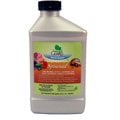 Check the current price |
|
2. Southern Ag 10401 Natural Pyrethrin Concentrate |
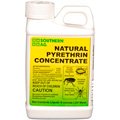 Check the current price |
|
3. Bonide (BND802) – Leaf Eating Worm & Moth Killer |
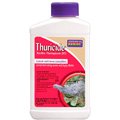 Check the current price |
|
4. Atrix – VACBP1 HEPA Backpack Vacuum |
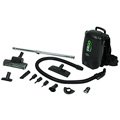 Check the current price |
How to Get Rid of Bagworms in the House
While bagworms can kill evergreen trees, causing them to die from defoliation, they are not harmful to humans. And yet, they can be observed on the building’s siding, outdoor furniture, etc., spoiling the aesthetics of the house. Some species can be found in locations like under the house eaves. The most well-known indoor species is the plaster bagworm, which usually rests on floor edges and walls. So how can you control bagworms indoors?
- Remove them by handpicking or with the use of a wire brush. You may try this Supply Guru 3-Piece Wire Brush Set, with each brush designed for different surfaces. While the stainless steel ones can be used on more stable surfaces, crimped brass and nylon bristles are more appropriate for delicate materials. Another advantage of this product is that the brushes feature an extra cluster of bristles allowing you to clean in the crevices and other hard-to-reach spots.
- Clean and vacuum regularly. The Atrix – VACBP1 HEPA Backpack Vacuum is created specifically for indoor pest control. With a weight of just 10 pounds, this powerful 1400W 12 amp unit allows you to move around easily while vacuuming. The backpack vacuum comes with shoulder straps and a belt loop that can be easily adjusted. The product also includes a long 6-foot hose, a blower adapter, an extension wand, and a HEPA bag. There is a wide choice of attachments, such as a crevice tool, a turbo brush, a furniture nozzle, and more.
- You can apply insecticidal sprays, focusing on cracks and crevices. The recommended time for insecticidal treatment is June when bagworm larvae are vigorously feeding. Insecticides made with bifenthrin or pyrethrin kill bagworms and can be used indoors.
This Compare-N-Save Concentrate Indoor and Outdoor Insect Control can be safely applied inside the house. Made with 7,9% bifenthrin, it provides a quick knockdown effect on bagworms and a wide range of other pests. The solution covers up to 88,000 square feet. It is very cost-efficient as one pint of the concentrate makes over 80 gallons of ready-to-use spray. Besides, you can mix it with other insecticides, including IGR. Apply it to shrubs, trees, and ornamentals.
How to Kill Bagworms on Evergreens: Arborvitae, Сedar, Pine Trees | Bagworm Insecticides & Sprays
There is a number of insecticides that will allow you to get rid of bagworms on arborvitae, cedar, pecan, pine trees, and other trees and shrubs. These active ingredients are recommended by scientists and have proved to be effective.
- Insecticidal Soap is pollinator-friendly but harmful to bagworms. It can be a homemade solution or a manufactured product, with the latter being more efficient and longer-lasting. According to researchers from the University of Nebraska-Lincoln, an insecticidal soap works well against young larvae, however, you will need to reapply it several times to suppress the bagworm populations.
The Safer Brand 5102 5102-6 All Insect Killer is effective against bagworms, moths, and a variety of other insects. In addition to a potassium salt of fatty acids, which is the main ingredient in insecticidal soaps, this product also contains 0,012% pyrethrins and 0,9% neem oil extract. As a result, it provides triple action: inhibits feeding, disrupts the nervous system, and dehydrates the insect. OMRI-listed, it is approved for organic gardening and can be sprayed on flowers, vegetables, fruits, and trees. The insecticide comes in a convenient ready-to-use 32-ounce spray bottle.
- Spinosad-based insecticides provide good control and are among the safest ones on the market. They can be harmful to pollinators, but not as much as chemical insecticides. It takes about a week for spinosad to eliminate bagworm and usually, a single application is insufficient. Spinosad contains chemical compounds that naturally occur in the bacterial species known as Saccharopolyspora Spinosa. It works upon contact or digestion, killing insects by disrupting their nervous system.
While any product made with spinosad can be used to kill bagworms, we recommend the Fertilome Spinosad Bagworm, Tent Caterpillar and Chewing Insect Control as it was formulated specifically for these insects. Fertilome is a brand of professional-grade and organic insecticides, fungicides, herbicides, and fertilizers. This product is organic and formulated with 0,5% spinosad, a mixture of spinosyn A and spinosyn D. Use the solution in the garden, lawns, and on ornamentals. Buyers claim that it is excellent for bagworm control.
- Pyrethrins are another type of relatively safe insecticides but, unlike spinosad, they provide a quick knockdown. These are organic compounds derived from Chrysanthemum cinerariifolium. While pyrethrins can also be harmful to pollinators that are present in the area of spraying, they don’t have a long-lasting repellent effect — just a couple of hours. This makes it possible to use this type of insecticide in combination with biological control methods.
The Southern Ag 10401 Natural Pyrethrin Concentrate will be a good choice for bagworm control. The active ingredients of this organic insecticide are 0.96% pyrethrins and 9.6% piperonyl butoxide. The latter is a waxy organic compound that doesn’t have its own pesticidal activity but works by increasing the potency of pyrethrins. The concentrate is safe for vegetables, ornamentals, pets, and livestock. Dilute it at a ratio of 2 tsp to 1 gallon of water and spray the infested area thoroughly.
- Pyrethroids are synthetic versions of pyrethrins. They include bifenthrin, gamma cyhalothrin, and permethrin. As Clemson University researchers note, products based on these ingredients are more potent, last longer, and are considered to be highly effective. Pyrethroids target both adults and larvae. The only downside is that they pose a serious threat to beneficial insects, which is why you should spray pyrethroids only late in the evening. Another reason for the limited use of these insecticides is that insects develop resistance to them after repeated applications.
Designed for both indoor and outdoor use, the Control Solutions Inc 82004505 Permethrin SFR Insecticide can be applied to trees, lawns, ornamentals, in and around buildings. Based on 36.8% permethrin, this professional-grade insecticide is labeled for a variety of insects including bagworms, ants, and beetles. It kills pests fast and provides a long residue — up to 3 months. Make sure that you dilute the concentrate properly and shake the solution from time to time while treating the infested areas.
- Organophosphates are relatively new on the market but already make up about half of the chemical insecticides. The most common organophosphates are malathion or acephate. These chemicals work by disrupting the normal functioning of the insect nervous system and should be applied directly to the infested trees and shrubs. Since organophosphates remain on leaves too long, experts recommend using them only to handle heavy infestations.
You may try the Spectracide HG-30900 Malathion Insect Killer , which can be applied around fruits, vegetables, ornamentals as well as around the building foundation. Made with 50% malathion, this potent concentrate should be mixed with water before application. Spray it on the infested trees and shrubs as soon as bagworms emerge. The canister contains 32 ounces of insecticide. The Spectracide Malathion Killer is high-rated with 4.6 out of 5 stars of the overall rating. As one of the customers said, the product solved his bagworm problem quickly. After spraying evergreens with this solution once a week in June, he has no more bagworms in the garden.
How to Get Rid of Bagworms Organically
Using biological methods of bagworm control is the most environmentally safe approach. Generally, experts recommend first trying biological methods and only if they don’t give desired results, turn to insecticides. So what products are effective against bagworms?
- Bacillus thuringiensis kurstaki (B.t.k) is bacteria that emit crystal proteins that kill bagworm larvae upon digestion within a few days. Once the crystal is dissolved, the lethal toxin is released in the insect’s digestive tract. The product should be sprayed on leaves which the target insects feed on. Scientists at the University of Massachusetts Amherst claim that B.t.k is as effective against bagworms as potent insecticides like bifenthrin. Keep in mind, though, that B.t.k kills only larvae and is useless against grown adults. The scientists suggest applying B.t.k in the late spring when the eggs hatch and new larvae emerge. The treatment should last for a week or two.
The Bonide (BND802) – Leaf Eating Worm & Moth Killer is based on Bacillus thuringiensis and kills target insects within days after ingestion. It is an easy-to-apply liquid formulation of the bacteria. Mix the 8-ounce product with water and apply it to the infested foliage using a sprayer bottle. The solution can be safely used on vegetables, ornamentals as well as apples, cherries, grapes, and other trees. One of the satisfied buyers says that the product has killed all visible bagworms on arborvitae plants in his yard and prevented further infestation.
- Trichogramma wasps are another option. These are tiny parasitic wasps that attack eggs of a variety of moth and caterpillar species. They are extremely small. To illustrate, five such wasps can easily fit on the pinhead. Trichogramma wasps kill bagworm eggs by laying their own eggs inside them. This prevents the bagworm eggs from hatching and, therefore, the damage they could cause. The infested egg turns black and then, an adult Trichogramma wasp hatches. Typically, Trichogramma wasps live no more than two weeks.
The Bug Sales Trichogramma 3 Squares/12,000 Eggs contains three hanging cards with a total of about 12,000 wasp eggs. This will be enough to cover as much as 50 sq ft. These insects attack over 100 species of moths and caterpillars, including bagworms. For humans, they are absolutely harmless. They neither sting nor bite. Moreover, you will hardly notice them flying around, which makes them appropriate not only for outdoors but also for indoors. The product comes with instructions on how to store and release wasps.
Rules for Getting Rid of Bagworms Based on Scientists’ Advice
Perhaps the most important rule in bagworm control is to take measures in a timely manner. Researchers from the University of Maryland say that removing these insects by handpicking will give better results if you do it in May before new bagworms hatch. Bacteria like Bacillus thuringiensis should be applied early in summer because this kind of biological control is effective only against young bagworms. Chemical insecticides should be used on infested shrubs and trees a bit later, in July.
Raymond Cloyd, who is K-State Research and Extension entomologist, stresses that applying insecticides timely and frequently enough is key to success. The thing is that young bagworms actively feed on foliage and are very susceptible to insecticidal treatment. This is particularly true for young insects that are 1/4-inch long. Another essential thing to remember is that applications should be frequent enough.
According to Cloyd, this is due to the fact that the larvae don’t hatch all at once. On the contrary, their catching largely depends on the temperature levels and other conditions. “Applying insecticides weekly for 4 to 5 weeks when bagworms are first noticed will reduce problems with bagworms later in the year,” he said. Cloyd adds that young bagworms have the ability to move from one tree or plant to another one using silken threads. Therefore, if you don’t spray insecticides frequently enough, the infestation may spread.
Expert Opinion: Jody Green, Nebraska Extension Entomologist
 Jody Green, Nebraska Extension Entomologist
Jody Green, Nebraska Extension Entomologist
Jody Green is a Nebraska Extension educator who develops educational programs on bedbugs, ants, cockroaches, and other health-related pests. She received her Ph.D. and M.S. in Urban Entomology from Purdue University in 2008 and 2004, respectively.
“Chemical control for bagworms is early to mid-June when they are still small. The best thing to use right now is Bacillus thuringiensis, which is B.t., very effective on caterpillars. And if you miss this window in June month, then you can probably use pyrethroids such as bifenthrin. You want to make sure that the plant is completely covered so that the bagworms that are feeding can acquire a lethal dose”.

